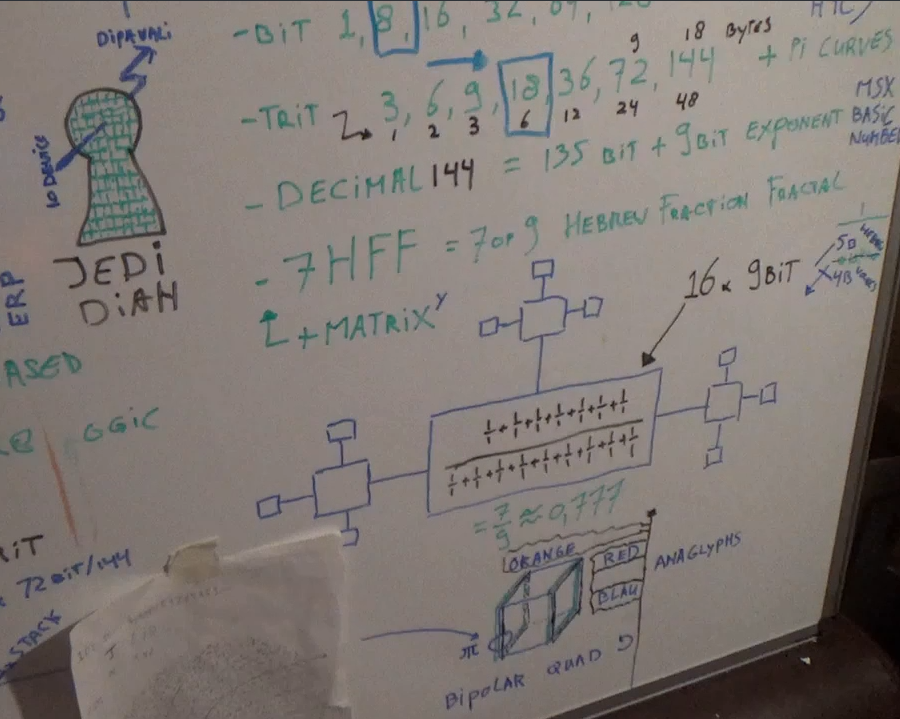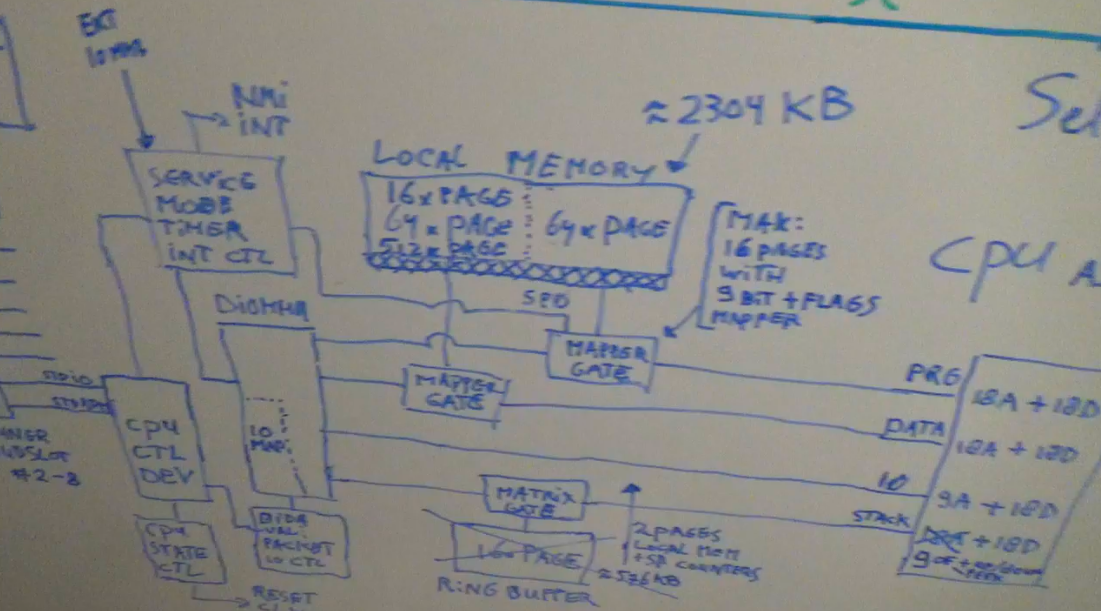3.1 KiB
#MSX Overview
The "++" is 18 bit re-implementation of the 8 bit MSX.
- msx0++ = micro-controller platform (no PSG,no VDP,no keyboard)
- msx1++ = kids mode-1 of msx3++ (max 16 colors at 640x480, NO PCM)
- msx2++ = kids mode-2 of msx3++ (max 18 bit at 2k)
- msx3++ = tricorders and nx01 terminal interfaces
- msx4 = 144 bit unlimited size matrix cube
Basic++
Beginners
All-purpose
Symbolic
Instruction
Code
++
Variables will me made fix fixed lenght hard translatable 18 bit words.
So all BASIC++ code will be for every child in 100% local human language.
MSX-BASIC 6.0 has the following features to delete ASCII from the MSX;
- Source in FC18(5785) as binary tokens in namespaced container tree format
- Upgrade to OPL(1984) BASIC without line numbers
- Embed APL(1966) into BASIC to write very short math functions
- Emded MPI-2(2007) like message interface for multi-process runtime
- Emded binary structure tree support, struct+inter and transform
- Uses simple
Decimal-144and 1152 bit NCR fractions - Add time slicer for stepped BASIC code see: arduino pulsefire mal.c
MSX4ATARI-SPEC
Goodbye bit, goodbye bytes.
- Cache is design error
- DMA is design error
- SMP is design error
- Shared memory is design error
- Threads are design error
- Unicode is one big brainfuck
- Computer language in human letters
The last real computer language was MSX basic as it stored the code in binary format.
A real computer language does not used a human ascii file format.
A child should not have to learn english and loose is culture just to write code,
Code and docs written by a hindi speaking child should be usable by a spanish speaking child.
MSX0⁺⁺ spec
A simple 18 bit platform for embedded and boot device.
See it as a MSX like one-chip 18 bit "Tandem T16" main frame.
MSX0++:
- 18 bit CPU; ZR8000
- 144 bit memory mapper
- MSXMMU+MSXIOMU for diplavi
- MSXSLOT2
- new 10Mhz UART console
- MSX spec without VDP,PSG and keyboard
ZR8000
- i8080 register based + ix/iy
- 18 bit data bus
- Z8000 quad memory space
- external stack for unlimited stack
- opCode traps
- Multiport CPU with 4 data and addr busses
Machine nodes of skynet, able to run native CP/M code from 1978. Replaces all other embedded platforms.
MSX3⁺⁺ spec
Equal to MSX0⁺⁺ spec, but added;
MSX3++:
- 4x CPU
- 4x VDP
- 4x Blitter
- 4x OPL4
Humanoid nodes of skynet. For tricorder's devices and UI panels.
MSX4 spec
True 18 bit platform with 144 bit CPU.
MSX4;
- CPU; TR9000
- TempleOS4 + Orange ERP OS on FPGA matrix
TR9000
- MISC stack based (see philips MISC)
- 144 bit data internals
- external stack for unlimited stack
- Multiport CPU with 8 ports, thus 5 stacks for matrix math
- Native Decimal144 for BASIC number
- Simple 1152 bit fractions for MATH
So a prototype "workstation" MSX4 matrix is 18 units; 18 by 18 grid stacked 18 high in cube.
So FPGA matrix of 5832 chips to test small scale.
Unlimited size matrix computers for adult octal nx01 warpcore running TempleOS.

